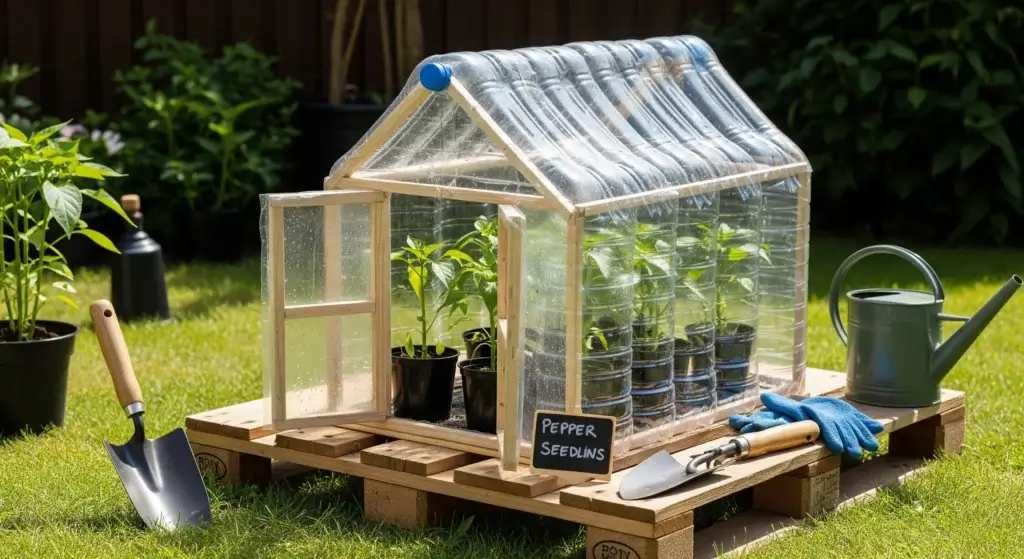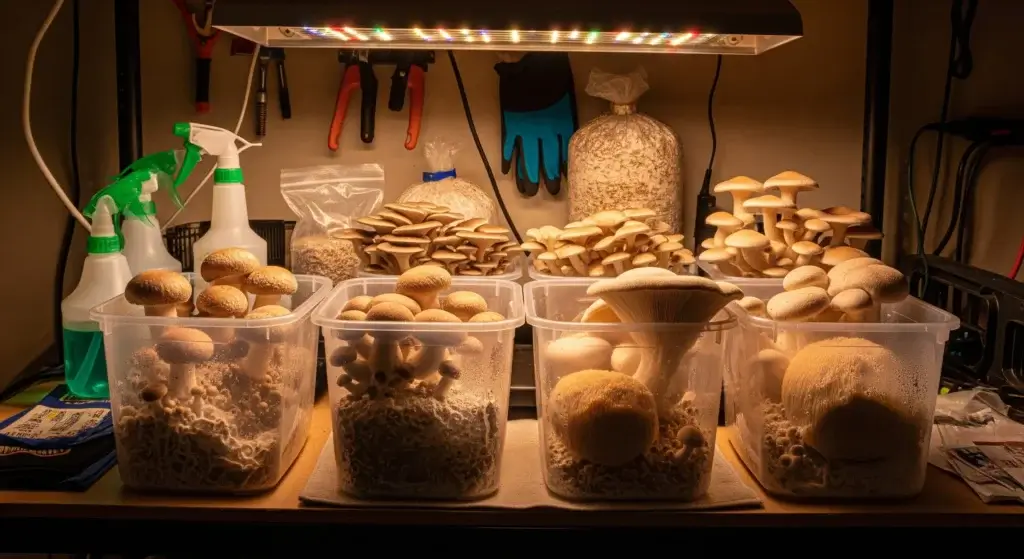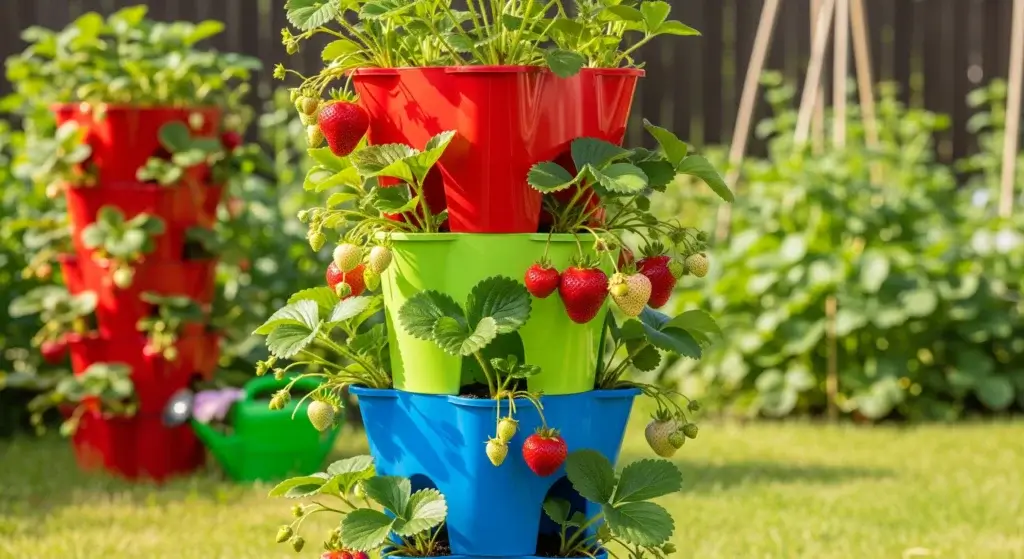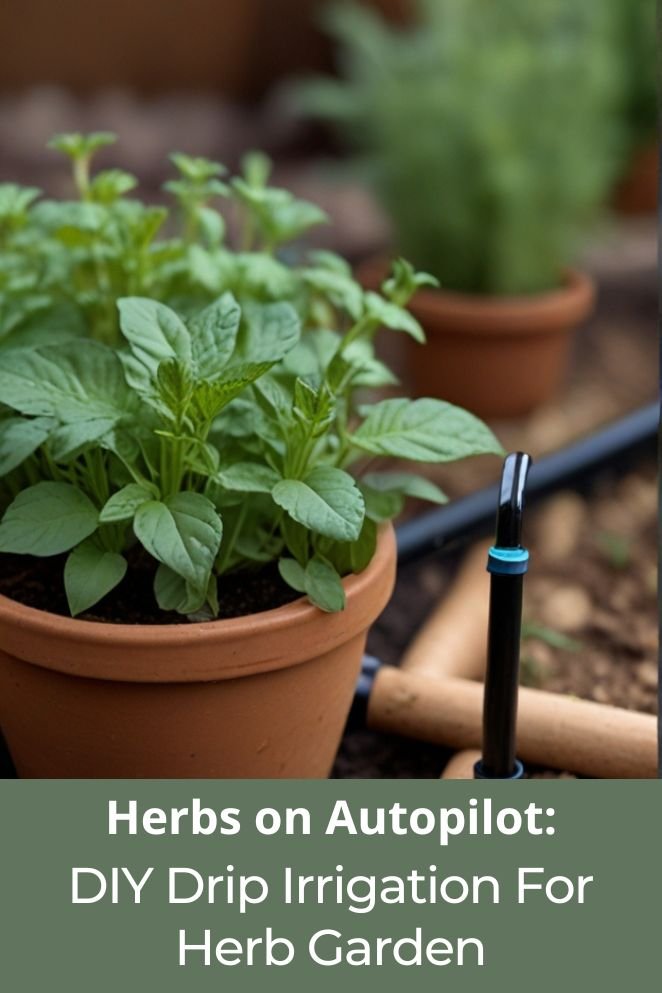
As a gardener, you know how crucial it is to provide your plants with the right amount of water.
Overwatering can lead to root rot and other issues, while underwatering can cause stress and even death.
Drip irrigation is a fantastic way to ensure your herbs receive the perfect amount of water, without wasting a single drop.
In this article, we’ll walk you through a simple DIY drip irrigation system for your herb garden.
Benefits of Using DIY Drip Irrigation for Herb Gardens
Using a DIY drip irrigation system for your herb garden offers a multitude of benefits that can enhance both the health of your plants and the efficiency of your gardening efforts.
Water efficiency
Drip irrigation systems stand out for their exceptional water efficiency, often using up to 90% less water compared to traditional sprinkler systems.
This is especially advantageous for herb gardens, where precise watering is essential to prevent overwatering and foster optimal growth.
- Read also: Grow Your Own! A Guide to DIY Herb Garden For Beginners
- Read also: No Yard Needed! DIY Herb Garden for Small Apartment
Targeted watering
One of the primary advantages of drip irrigation is its ability to deliver water directly to the roots of plants.
By bypassing the soil surface, evaporation and runoff are minimized, ensuring that the herbs receive the right amount of water precisely where it’s needed, thus preventing waste.
Reduced weeding
Drip irrigation’s focused delivery at the root zone not only conserves water but also minimizes weed growth between plants.
With less moisture distributed across the soil surface, there’s less opportunity for weeds to take root, reducing the need for manual weeding and simplifying garden maintenance.
Increased yield
Consistent moisture levels provided by drip irrigation systems are conducive to healthy plant development.
This consistency translates into increased yields and a more bountiful harvest of flavorful herbs, ultimately maximizing the productivity of your garden.
Flexibility and customization
DIY drip irrigation systems offer the flexibility to tailor watering solutions to the specific requirements of your herb garden.
You can fine-tune factors such as flow rate, emitter placement, and tubing layout to accommodate the unique needs of different herbs, ensuring optimal growing conditions for each variety.
Cost-effectiveness
While there may be an initial investment involved in setting up a drip irrigation system, the long-term cost savings are significant.
By minimizing water waste, reducing the frequency of watering, and promoting healthier plant growth, drip irrigation systems ultimately lead to substantial savings over time.
Easy maintenance
Compared to traditional sprinkler systems, drip irrigation systems are relatively low-maintenance.
With fewer moving parts and less susceptibility to clogging, they require minimal cleaning and upkeep, allowing you to spend less time on maintenance tasks and more time enjoying your thriving herb garden.
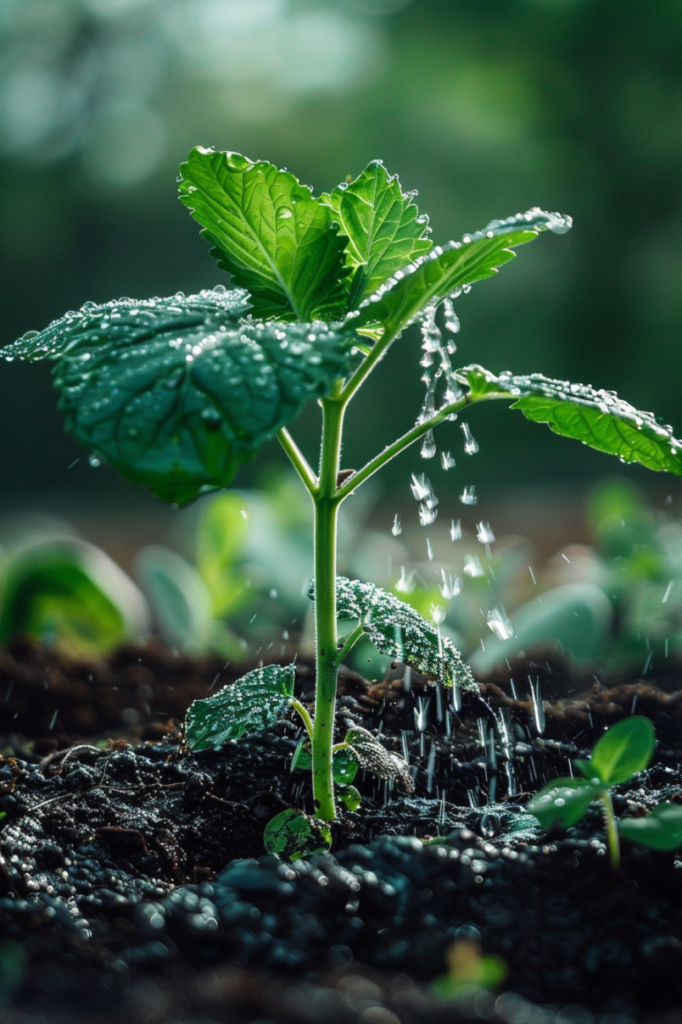
Materials Needed
To set up a drip irrigation system for your herb garden, you’ll need the following materials:
- Water source: You can use a hose bib or faucet to connect your irrigation system to a water source.
- Mainline tubing: This is typically 1/4-inch diameter polyethylene tubing. The length you’ll need depends on the size of your garden.
- Emitters or drippers: Choose emitters or drippers with the appropriate flow rate for your herbs, usually ranging from 0.5 to 2 gallons per hour.
- Connectors: You’ll need elbows, tees, and end caps to connect the tubing and direct the flow of water.
- Pressure regulator (optional): If your water pressure is high, a pressure regulator can help ensure the system functions properly.
- Timer (optional): Consider using a timer for automated watering, which can help save time and ensure consistent watering.
Step by Step Guide
Creating a herb garden can be a fulfilling project, offering both practical benefits and aesthetic appeal to your outdoor space.
Here’s a step-by-step guide to help you plan and install a simple irrigation system for your herb garden:
Plan your layout
Before diving into installation, take some time to sketch out your herb garden layout.
Consider the size and placement of each herb plant, ensuring they have enough space to grow.
Measure the distance needed for the mainline tubing to reach all the herbs, taking into account any obstacles or bends in the garden.
Assemble the mainline
Begin by attaching the mainline tubing to your hose bib using a suitable adapter.
This mainline will serve as the backbone of your irrigation system, delivering water to each herb plant.
If you’re planning to use a timer for automated watering, now is the time to connect it between the faucet and the mainline.
Install emitters
Using a hole punch designed for irrigation tubing, create holes in the mainline tubing near each herb plant.
These holes will serve as entry points for the emitters or drippers, which deliver water directly to the roots of the plants.
Carefully push the emitters into the holes, ensuring a secure fit to prevent leaks.
Run the laterals
Depending on the layout of your herb garden, you may need to run smaller diameter “lateral lines” from the mainline to reach each plant.
Use connectors to join these lateral lines to the mainline, ensuring a snug fit to prevent water leakage.
Adjust and test
With the irrigation system assembled, it’s time to turn on the water supply and check for any leaks or issues.
Watch carefully as water flows through the system, adjusting emitter placement or tightening connections as needed to ensure optimal performance.
Automate watering (optional)
For added convenience and efficiency, consider attaching a timer to your irrigation system.
A timer allows you to schedule regular watering sessions for your herbs, ensuring they receive the right amount of moisture without the need for manual intervention.

Additional Tips
Here are some additional tips to enhance the effectiveness of your drip irrigation system and ensure optimal care for your herbs:
Choose the right emitter
Take into account the specific water requirements of your herbs when selecting emitters.
Different plants have varying needs, so opt for emitters with a flow rate that matches the water needs of your herbs.
This thoughtful selection ensures that each plant receives the appropriate amount of water, promoting healthy growth and vitality.
Use a pressure regulator
High water pressure can strain your irrigation system and lead to uneven water distribution or even damage to the tubing and emitters.
Installing a pressure regulator helps stabilize the water pressure, ensuring consistent and gentle delivery to your plants.
This safeguard not only protects your system but also promotes efficient water usage, benefiting both your garden and the environment.
Mulch around your plants
Applying mulch around the base of your plants offers several benefits for both soil health and moisture retention.
Mulch acts as a protective barrier, shielding the soil from direct sunlight and reducing evaporation.
This helps maintain soil moisture levels, minimizing the frequency of watering required.
Additionally, mulch contributes to soil fertility as it decomposes, enriching the growing environment for your herbs.
Monitor your system
Regular monitoring of your drip irrigation system is essential to identify and address any issues promptly.
Check for signs of leaks, clogged emitters, or damage to the tubing, especially after extreme weather conditions or prolonged use.
By staying vigilant and addressing any issues promptly, you can ensure the continued efficiency and effectiveness of your irrigation system, maximizing the health and productivity of your herb garden.
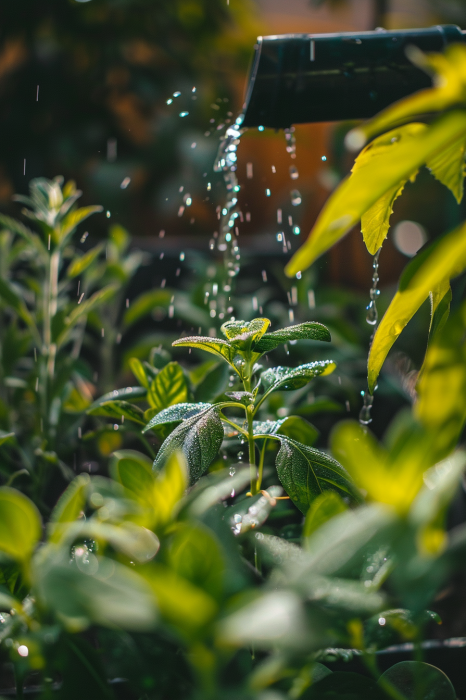
- Read also: Trash to Treasure: DIY Herb Garden From Recycled Materials
- Read also: Herb Heaven Indoors: DIY Indoor Herb Garden With Grow Lights
Conclusion
With these simple steps and tips, you can create a DIY drip irrigation system for your herb garden.
By providing your herbs with the right amount of water, you’ll enjoy a thriving and healthy garden.
Remember to monitor your system regularly and adjust as needed to ensure optimal performance.

